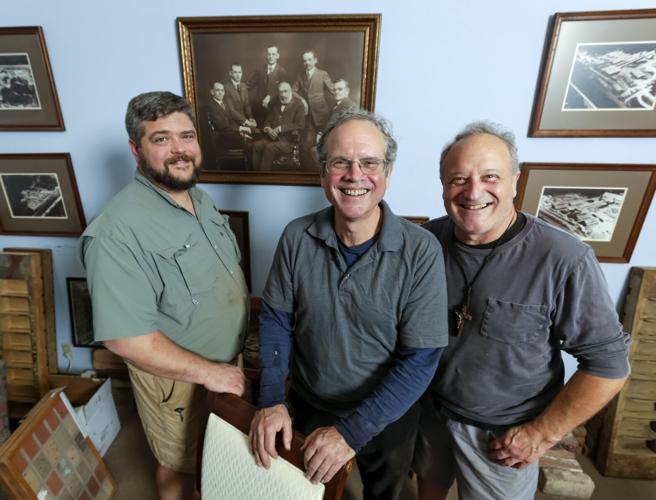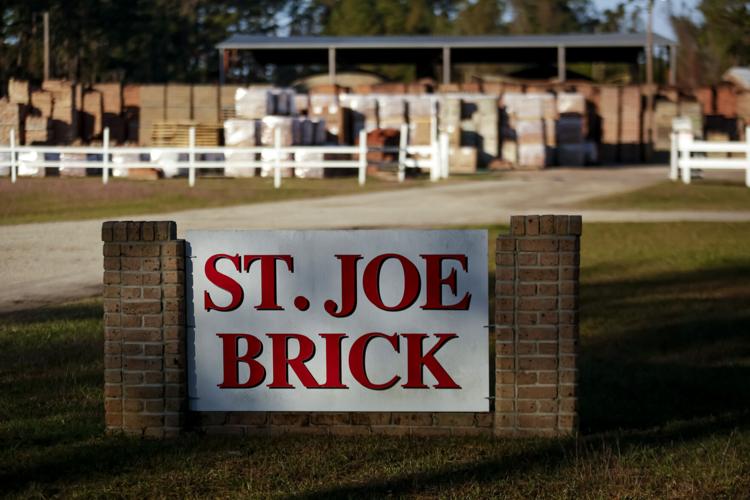In 1895, German brickmaker Peter W. Schneider acquired St. Joe Brick Works, a modest enterprise tucked away in what was then the boondocks of south Louisiana.
The small brickmaking plant had been founded four years earlier by Joseph McCarron, an Irish immigrant people called “St. Joe.” When the ownership changed, the name did not, nor did much of anything else at the brickyard just off U.S. 11 in Pearl River.
St. Joe Brick Works Inc. has remained under the auspices of the Schneider family for 130 years. It continues to operate the old-fashioned way, utilizing a soft-mud process in which clay is formed in wooden molds to create individual bricks, just as was done in the early colonial period. Many of the company’s bricks bear the distinctive “St. Joe” inscription.
Last month, the brick company received the St. Tammany Chamber of Commerce’s Legacy Award, which is presented annually to a thriving business that has made a long-term commitment to preserving the integrity and character of the parish. But St. Joe has left an imprint that reaches far beyond the north shore, with its product serving as the bedrock of famous structures throughout the country.
Bricks made at the plant near Pearl River are often specified by architects whose projects demand the aesthetic appeal and character of materials that are not mass-produced.
St. Joe bricks can be found on historic sidewalks in New Orleans, throughout the campuses of LSU in Baton Rouge and Rice University in Houston, in the Atlanta Botanical Garden and in other notable buildings as far away as Massachusetts and New York. They were also used in churches, hospitals and museums, including the National Civil Rights Museum in Memphis and historic Fort Jefferson off the tip of Key West, Florida, which is the largest brick masonry structure in the Americas.
“In the lifetime of this company, we’ve made one billion, six hundred twenty-five million bricks, give or take a few million,” said Pete Schneider III, who along with other Schneider family members currently operate the brickyard. “Isn’t that phenomenal? We’ve been in business 130 years.”
Throughout its history, little has changed in the long and painstaking process used to make St. Joe bricks. Since the start of the 20th century, the company has purchased some “machinery” to spur its production efforts. But that most recent acquisition was made in 1955 and did not significantly change the underpinning of the brickmaking process.
Most modern brick plants make their product using the extrusion process, which forces low moisture clay through a die that forms holes and produces wire cut faces. The holes reduce their weight and price. Using this process, a modern brickyard can manufacturer up to a million bricks a day.
St. Joe bricks are made by pressing mineral-rich southeastern Louisiana clay into individual wooden molds at a very high pressure. Their popular coloring is the result of a firing process during which the product is baked in massive brick kilns where the fire heats to about 25,000 degrees Fahrenheit.
“Our product is the highest fire-face brick in the world,” Schneider said.
Schneider currently runs the plant with brother Chris and son Pete IV, the company’s distribution manager. St. Joe is one of only five brickyards in the U.S. that still makes its product in this yesteryear fashion. The plant can make about 30,000 bricks a day, a fraction of what modern plants produce, and the Schneiders have no plans to change the traditional methods used.
“They (modern plants) can make a million bricks a day,” Pete Schneider III said. “But they don’t have the character or instant antiquity that a St. Joe brick has.”
St. Joe Brick Works is the epitome of a family business. Most members of the Schneider family over the past several generations grew up working at the brickyard, with many eventually finding their way into the business on a full-time basis. The legacy of the business is illustrated by a photo that hangs in the company’s office. It shows Peter W. Schneider, the great-grandfather of the present-day owners, seated in a chair surrounded by his five sons, who he trained to make bricks.
In their own minds, the Schneider brothers weren’t originally cast as brick makers. Pete had his sights set on being an actor and singer, and Chris was into music. Their father died in 1977 at age 50 when Pete was 24 and Chris was 19. Somewhat like the George Bailey character in the classic movie “It’s a Wonderful Life,” Pete set aside his original ambitions and took over the family business. Chris eventually joined him, and life went on at the family brickyard.
Pete Schneider III served in the state Legislature from 1992 to 2008, often making laws by day and bricks by night, while Chris Schneider was ordained as a Catholic deacon in the Archdiocese of New Orleans in 2012. Assigned to St. Margaret Mary Parish in Slidell, he serves at Masses, presides over funerals and performs baptisms when he’s not helping manufacture bricks embossed with the heavenly moniker.
The brothers said the demand for St. Joe bricks remains high, a demand that has created stress for the brickyard, which like many other businesses, is struggling with an ongoing worker shortage. Fifteen workers are needed to operate the plant, but as of late November, St. Joe had only nine.
The situation verges on intolerable, but it has highlighted the never-say-die spirit of the small family business that had endured through the generations.
“At any one point in time these days, you might have six Schneiders in the 15-person crew,” Pete said. “That’s how short we are.”


